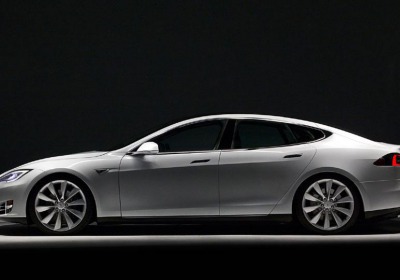Tesla is ridiculously successful, so far
Thu, 03 Apr 2014
Several Tesla Model S sedans catch fire, company co-founder Elon Musk blames the media, Tesla stock prices rise.
Tesla cars are the subject of a recall, Musk blames the word “recall,” Tesla stock soars. Tesla posts what it calls profits but what everyone else views as losses, stock price shoots to $250 a share. Musk pulls off his mask to reveal a hideous alien form, stock price skyrockets.
OK, we might have made up that last one, but not the others.
Seriously, what is going on with the zany Silicon Valley carmaker? What makes investors line up to throw money at it regardless of what has traditionally been called, you know, reality? Musk is a visionary, is what. Others look at things as they are and ask why. Musk sees things as a space-boy comic-book hero and says, “Woo-hoo! Let's go!”
And he is, well, going. Tesla recently announced an offering of $1.6 billion in convertible notes. (We have never offered $1.6 billion of anything, but we are not grand visionaries.) The money is going to fund two things: first, the coming Gen III car-for-the-common-man, due in 2017 (rumor has it we'll see the car at next January's Detroit auto show, costing about $40,000 and boasting a 200-mile range). Second, a rumored battery factory so big that Musk gave it a whole new name -- "gigafactory” -- because a mere “factory” would understate its magnificence. States are lining up to woo Tesla and its forthcoming gigafactory. They seem as smitten with Musk's vision as Wall Street is with his stock.
So, is Tesla really going to make it? Will it really be selling 250,000 cars a year in the U.S. and 500,000 a year worldwide just two or three years from now? Here are a few things to consider before you sink all your retirement income into this grand electric colossus.
The auto industry chews up and spits out startup electric carmakers the way we plow through sunflower seeds at a baseball game. Anyone remember Think, Fisker, Coda, ZAP, Aptera, Solectria, Corbin or Phoenix?
Success as a boutique carmaker catering solely to early adopter Silicon Valley zillionaires who buy cars in relatively small numbers is one thing. Success selling in the vast, soft-white affordable sedan segment's underbelly is quite another.
Not only are buyers here not technically driven early adopters, but they have choices other than a Tesla. Why buy an untried Gen III when you can just as easily buy a fully warrantied BMW i3, Toyota RAV4 EV, Chevrolet Spark EV, Honda Fit EV, Fiat 500e, Ford Focus Electric, Mitsubishi i-MiEV or Nissan Leaf, to name just the Gen III competitors? The Tesla Model X SUV has even more established gasoline rivals.
Do you understand just how many dealers such a sales goal requires? How many of those superchargers? How many door handles that are capable of actually opening the damned doors?
Tesla got its factory from Toyota almost free of charge, along with giant stamping machines, a urethane plastics-injection molding facility and a full paint shop. Future factories, and expanding this existing one, won't come free.
Say Tesla does meet its goal of selling 500,000 cars a year. Will it continue to offer free electricity for life to all Tesla owners? At 10 cents a kWh times 12,000 miles a year times 500,000 cars, the costs add up. Not to mention the cost of all those $200,000 superchargers all over the place. Tesla guarantees the Model S' resale value. Can it issue the same promise for the Model X, Gen III and any other future Teslas?
Tesla might make it. It really might. The Model S deserves the majority of the accolades it gets. But, at some point, reality and simple math are going to combine to smack Tesla the Carmaker upside its robotic head, aren't they? What then, Iron Man?
By Mark Vaughn

